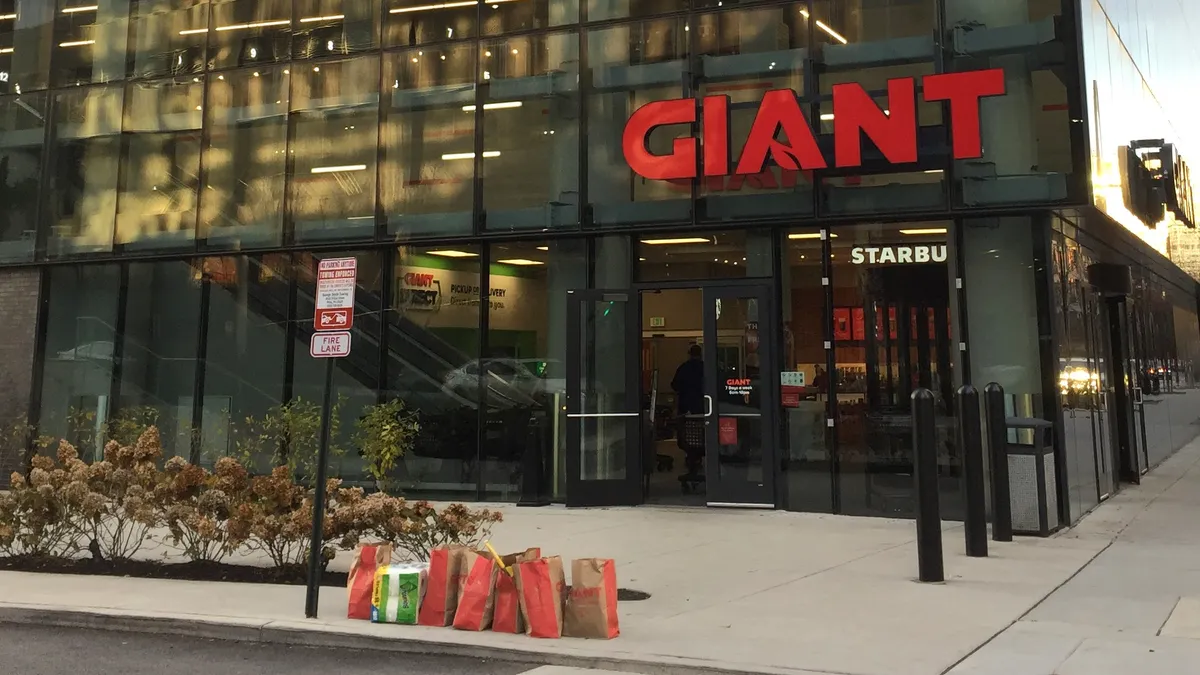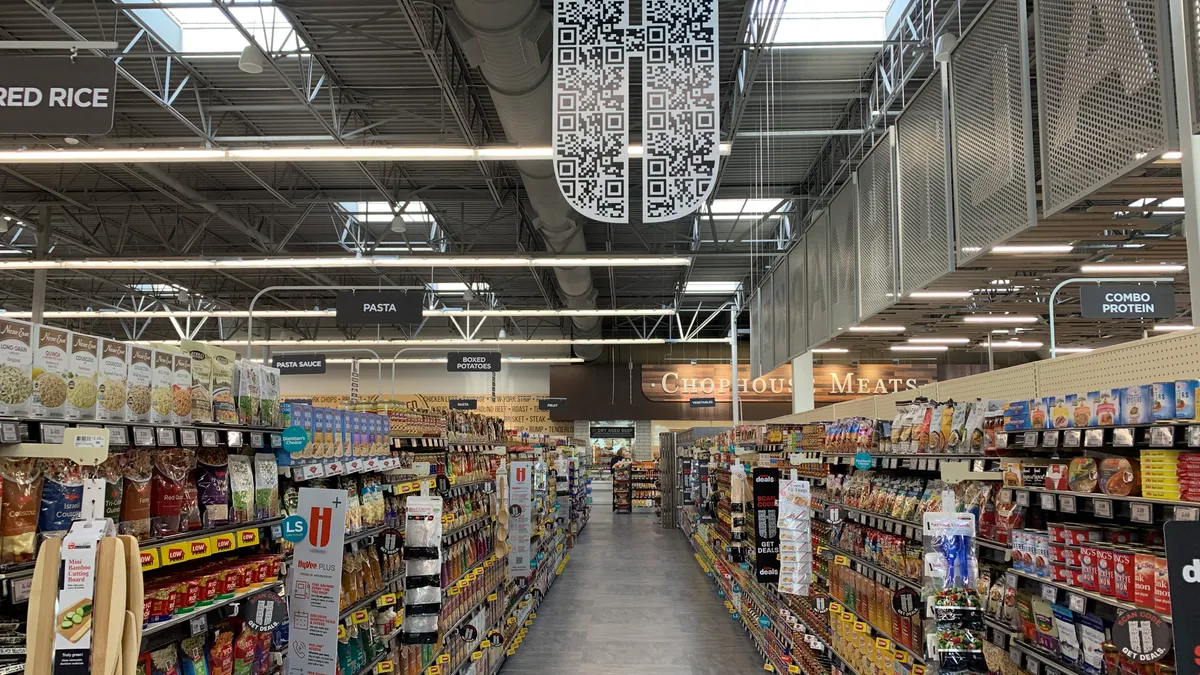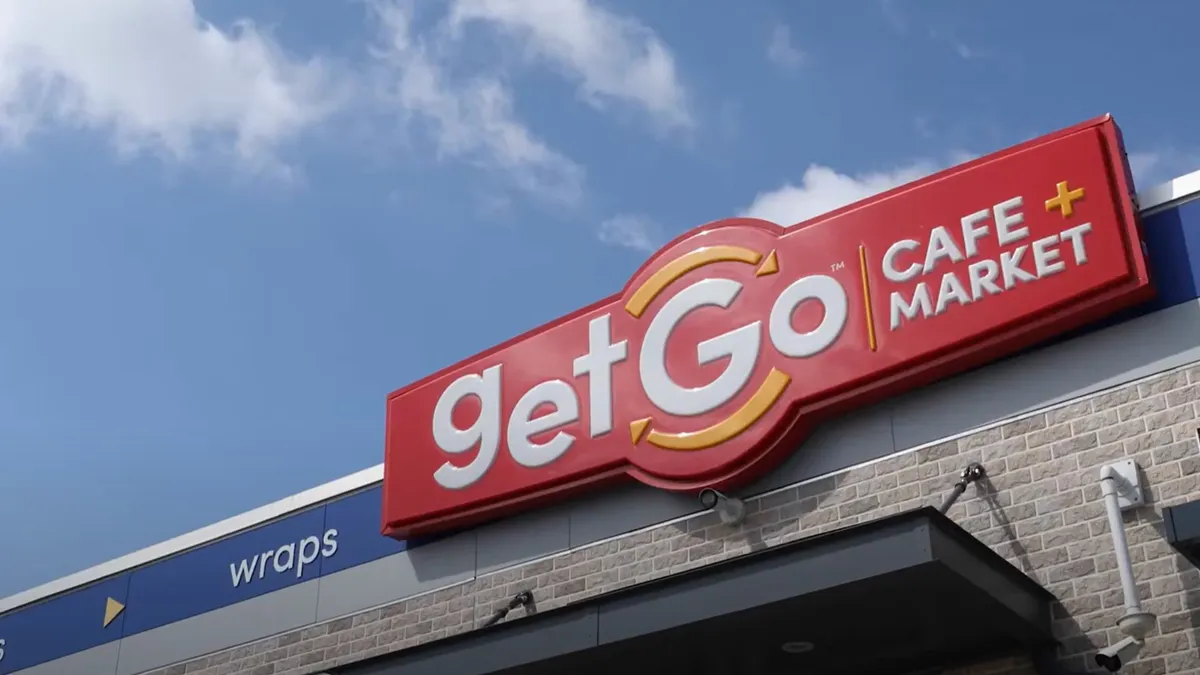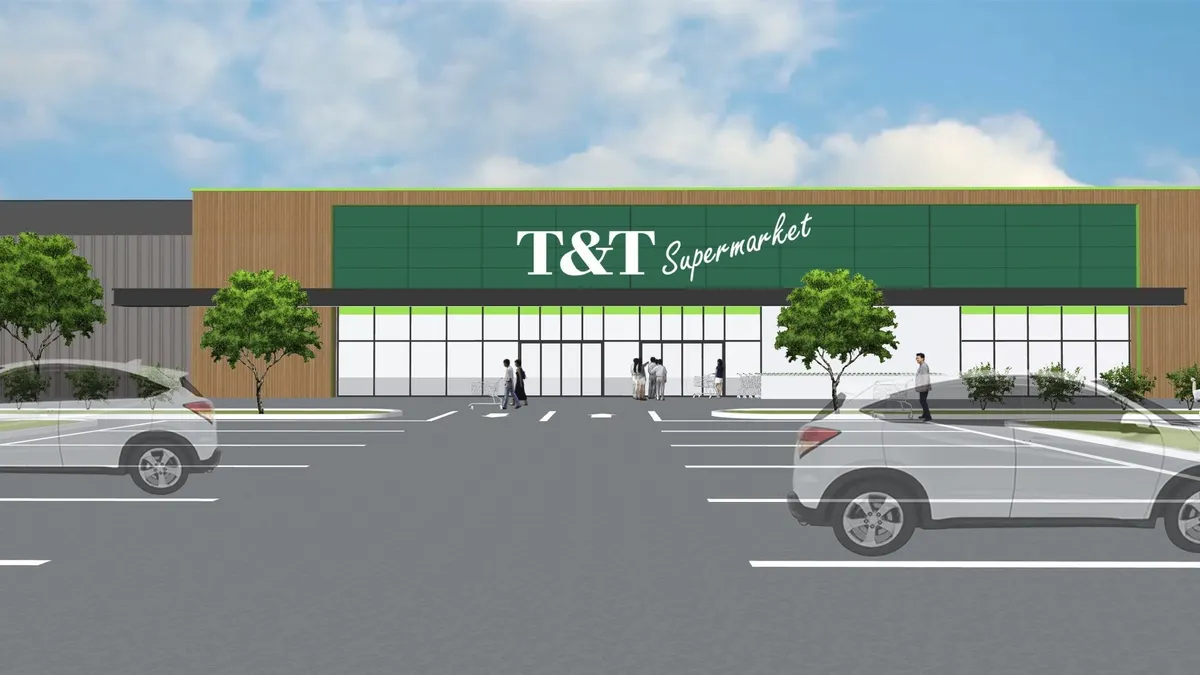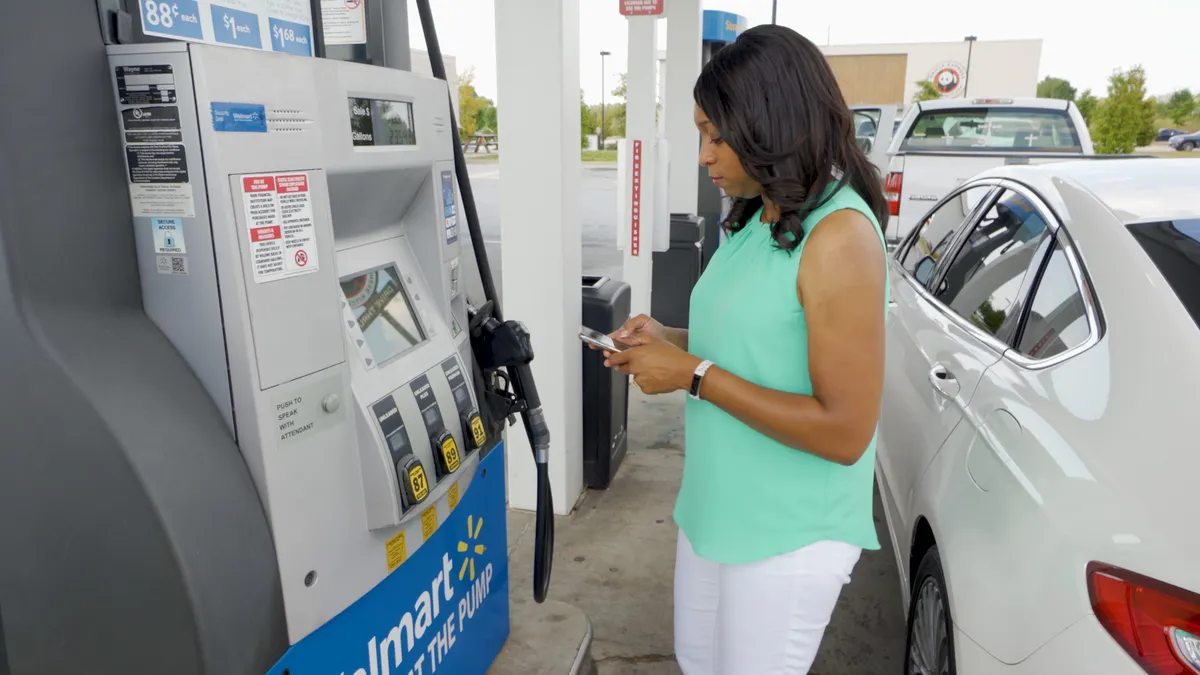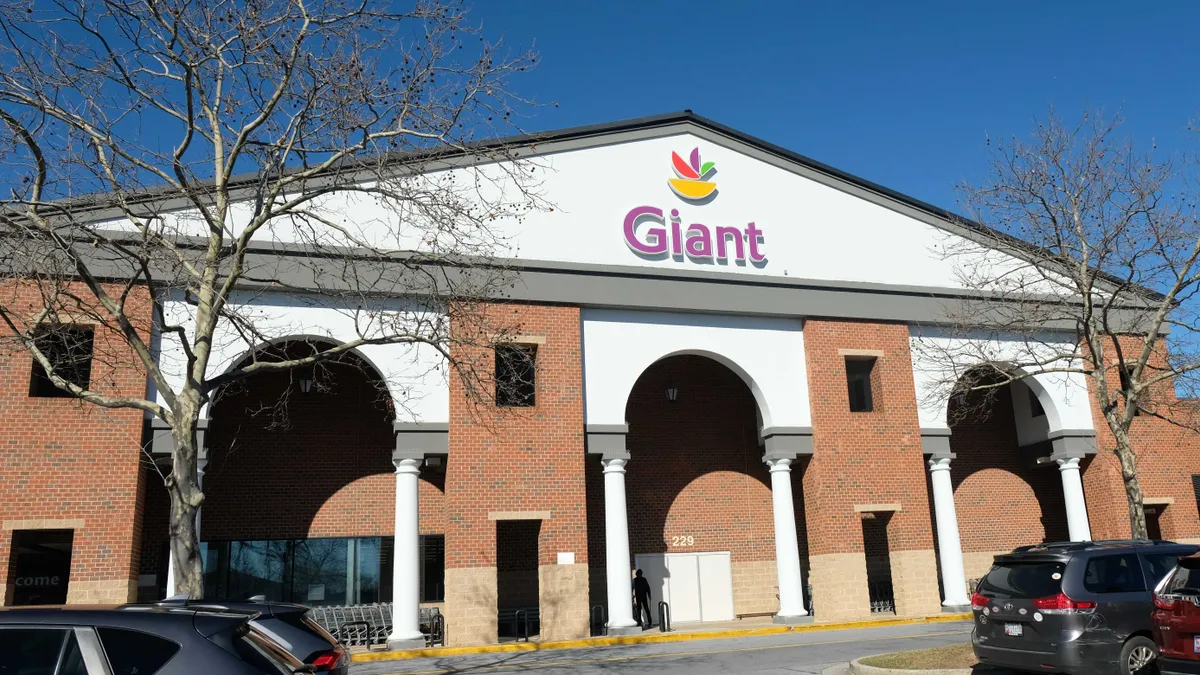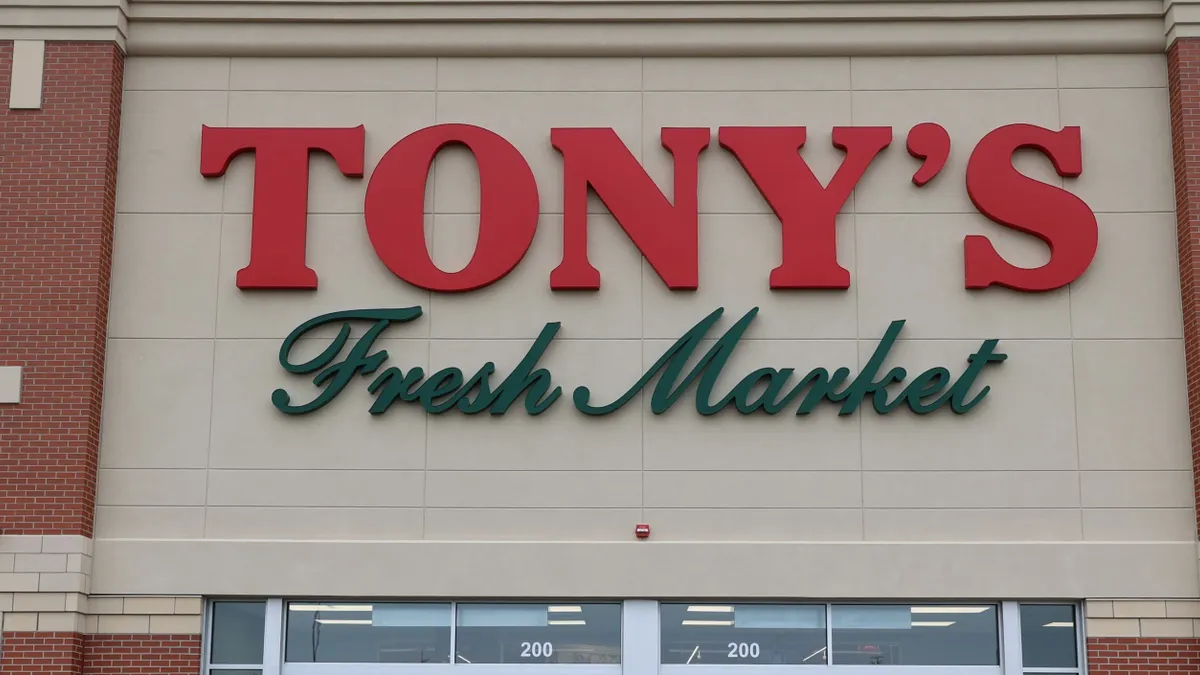Frans Muller oversees one of the world’s largest and most complex retailing empires. But when the Ahold Delhaize president and CEO reflects on what the company has learned during the past few years, he speaks in strikingly simple terms.
Even as Ahold Delhaize continues to deal with pandemic-induced challenges like rising prices, rampant theft, supply chain disruptions and labor shortages, Muller believes the Netherlands-based supermarket company needs to focus on something much more basic: how people eat.
“A big lesson for us is that we have to do … a better job in informing [and] educating consumers what food is, what healthy food is, what cooking is. And how cool it is to have an at-home, great meal on your table,” Muller said in an interview. “People were forced during COVID to go in this direction, and we found out how many people had no experience or no passion for it.”
Muller added that a top priority for the company lies in reconciling people’s “very new and different eating behaviors” with the business realities that come with running a low-margin business charged with meeting people’s need for essential goods. He pointed out, for example, that the company has not seen the quantity of goods it sells increase even as it has posted strong financial results in recent quarters.
“I’m not happy with the fact that we don’t see volume growth,” said Muller, who took over the top role at Ahold Delhaize in 2018 after holding other positions at the company and earlier serving as an air cargo executive for KLM. “The growth we had seen was mainly inflation-driven. That is nice for a moment, but it is not a sustainable solution.”
As chief executive of Ahold Delhaize, Muller runs a sprawling international company that operates more than 7,600 grocery stores under 19 brands in the United States, Europe and Indonesia. The retailer generated more than 60% of the nearly 22 billion euros ($24 billion) in revenue it posted in its latest quarter from the United States, where Ahold Delhaize runs about 2,045 supermarkets under banners including Food Lion, The Giant Company, Hannaford, Giant Food and Stop & Shop.
Muller spoke with Grocery Dive in late November following a media tour of The Giant Company’s flagship store in Philadelphia.
This interview has been edited for length and clarity.
GROCERY DIVE: What’s your reaction to people who believe grocery stores have thrived because of inflation?
FRANS MULLER: I can tell you that our gross margins did not improve. It's not that we took more money. We do not have a lot of margin to play with. We’re not a 16, 20 EBIT percentage company like a number of big manufacturers are. We are a 4% company, and compared to some retailers in the U.S. that is relatively good already. So we are proud about that.
How has inflation impacted your costs?
If you see on a three-year stack, on a two-year stack, where prices went, it’s hard. You see, in your total cost development, that two years of hyperinflation has also an effect on your own costs, in materials you use in stores, if it's plastic, or cardboard, in labor costs, in IT and automation. [For example,] we pay now 20% more to remodel a Food Lion store than we paid before.
What are your thoughts about how the Kroger-Albertsons merger would affect your company if it goes through?
Let’s see where that goes. I don’t want to speculate on that. There’s not a lot of overlap in our stores on the East Coast when you talk about Kroger, Acme, [Harris] Teeter, these kinds of brands. But scale does matter in retail. And both companies have a national footprint.
That’s why growth for us is important. There’s plenty of opportunities on the East Coast, where we are, we think, or some adjacencies when you go more west. And scale does matter, not necessarily only from a procurement perspective, from a sourcing perspective, but also from the perspective of spreading your digital and technology investment dollars over more sales, so that by unit, it gets less expensive.
Do you see opportunities to expand Ahold Delhaize’s footprint in the U.S.?
Yes. We will see that a lot of independents in the market now … don’t want to remodel their stores because [they don’t have] money, or don’t have the money to invest in digital data, technology, e-commerce. So those companies will come to the [acquisition] marketplace.
How has your definition of “omnichannel” evolved in recent years?
I think we were very early in our omnichannel beliefs and strategies — so early that people said, “Forget it,” because there will be no stores anymore. I think in the meantime, we got cured from that panic.
I think the modalities of fulfillment have, in the meantime, rapidly changed, especially in the U.S. There’s been a big switch from next-day delivery to completely different modalities of fulfillment, which also is [what customers want] and are in the end more economical.
I think the whole connection with you as a customer, on the digital relationship, on hyper-personalized relationship, on couponing, on the type of offers you get from us, on the connection between the different journeys — I think that whole thing will be changing.
Why did Giant Food decide to close the three e-commerce distribution facilities in the Washington, D.C.-area earlier this year?
Those were warerooms, and they were an adjacency to an existing store with a smaller assortment. But we offer the full assortment at the store, so why would you have a wareroom when you have next door a full store and you have picking software to organize that? We would like to have 60,000 items to choose from, and not 10,000.
Do you plan to open more automated facilities like The Giant Company’s robotic e-commerce distribution center in the Philadelphia area?
Yes. There’s one that just opened in Rotterdam [in the Netherlands], and there’s a second one coming later in the year or the beginning of next year. But to be honest and to be humble at the same time, it's not so easy in the total investments, in the total productivity, in the total specs for your specific assortment and definitions. It’s not a walk in the park.
There’s still some experimental dimension, which is OK, because the reason why you do that is not only saving labor costs, and productivity, it’s also [because] the availability of labor is getting more and more difficult, especially in Europe. So micro-fulfillment centers like Albert Heijn has now in Rotterdam [are] a solution for productivity and cost but also for availability of labor.
Are you planning to open more automated facilities in the U.S.?
Yes, I see that coming. I think that's where the Americans and the Europeans work together quite nicely. We have a working team on [distribution center] automation, which is a completely different functionality than a micro-fulfillment center.
[The Giant Company] here in the U.S. might have a much bigger assortment than Albert Heijn, or might have a different view of how [they] would like to pick, so you might need a different machine.
And I think we should help each other because those big vendors tell you, “We know it all.” But they don’t know it all. So we have to support [each other] and make sure that we get all the knowledge on the table.



